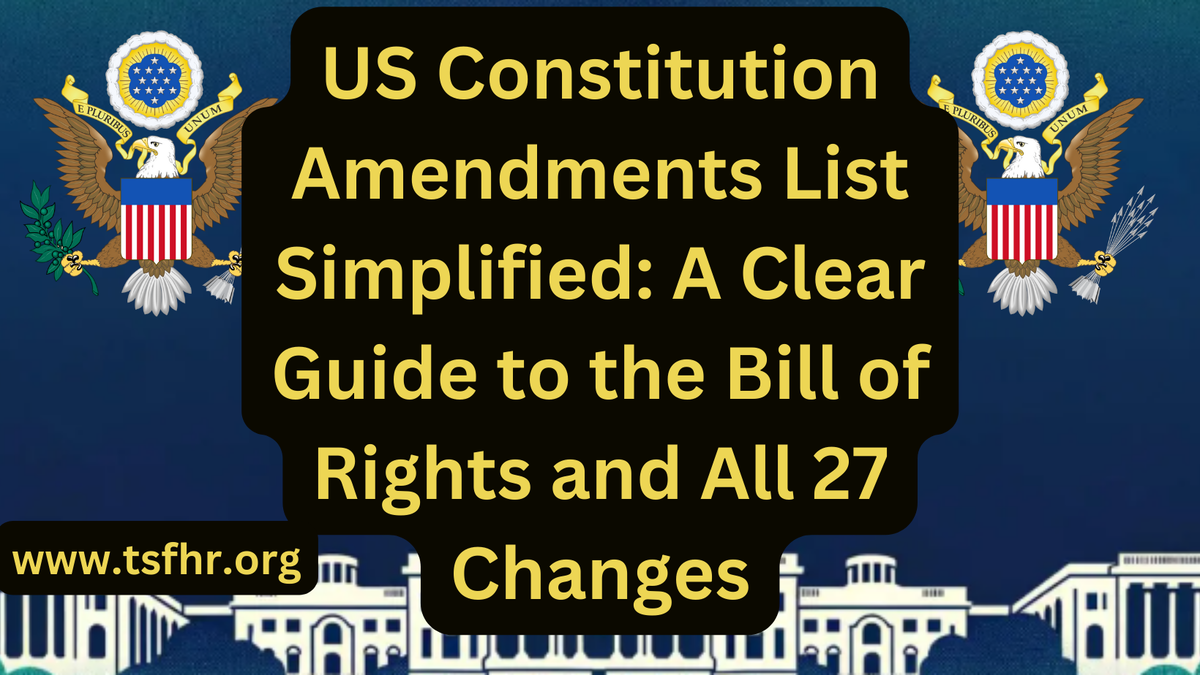US Constitution Amendments List Simplified: US Bill of Rights And Amendments – A Clear Guide to the Bill of Rights and All 27 Changes. Discover a simplified list of all 27 amendments to the US Constitution. Understand their significance and how they shape American democracy today.
Introduction
The US Constitution is often called a “living document” for a reason—it evolves with the times through amendments. But let’s be honest, legal jargon can make it overwhelming. That’s why I’m breaking down all 27 amendments into simple, digestible explanations. Whether you’re a student, history enthusiast, or just curious, this guide will help you understand how these amendments impact our lives today. For instance, did you know the First Amendment protects your right to speak freely? Let’s dive in to simplify this foundational aspect of American democracy!
US Constitution Amendments List Simplified | US Bill of Rights And Amendments
What Are Constitutional Amendments?
- Definition of amendments and their role in the Constitution.
- Brief overview of the amendment process (Article V).
- Why amendments are critical to adapting to societal changes.
The Bill of Rights (Amendments 1-10) Simplified
- Freedom of speech, religion, and press (1st Amendment).
- Right to bear arms (2nd Amendment).
- Protection against quartering soldiers (3rd Amendment).
- Protection from unreasonable searches (4th Amendment).
- Rights in criminal cases, including due process (5th Amendment).
- Speedy and public trials (6th Amendment).
- Civil cases and the right to a jury trial (7th Amendment).
- Protection from cruel and unusual punishment (8th Amendment).
- Rights not listed are retained by the people (9th Amendment).
- Powers not delegated to the federal government (10th Amendment).
Amendments That Transformed American Society (11-15)
- Sovereign immunity (11th Amendment).
- The process of electing the President and Vice President (12th Amendment).
- Abolishing slavery (13th Amendment).
- Defining citizenship and equal protection (14th Amendment).
- Voting rights regardless of race (15th Amendment).
Progressive Era Amendments (16-19)
- Income tax authorization (16th Amendment).
- Direct election of senators (17th Amendment).
- Prohibition of alcohol (18th Amendment).
- Women’s suffrage (19th Amendment).
Modern Changes to the Constitution (20-27)
- Presidential and congressional terms (20th Amendment).
- Repeal of prohibition (21st Amendment).
- Term limits for the President (22nd Amendment).
- Voting rights for Washington, D.C. (23rd Amendment).
- Abolishing poll taxes (24th Amendment).
- Presidential succession (25th Amendment).
- Voting age lowered to 18 (26th Amendment).
- Congressional salary changes (27th Amendment).
Why Understanding Amendments Boosts Productivity
- How knowing your rights can empower personal and professional decisions.
- Real-life examples: Using the First Amendment to advocate for workplace change.
- The 14th Amendment’s role in creating equal opportunities for all.
Conclusion
The amendments to the US Constitution are more than just historical changes—they shape the freedoms and rights we often take for granted. By understanding them, you not only gain knowledge but also a toolset for navigating modern challenges. Whether you’re defending your rights or contributing to a fairer society, these simplified explanations can serve as your starting point. Ready to dive deeper into your constitutional rights? Explore more, because knowledge is power!
